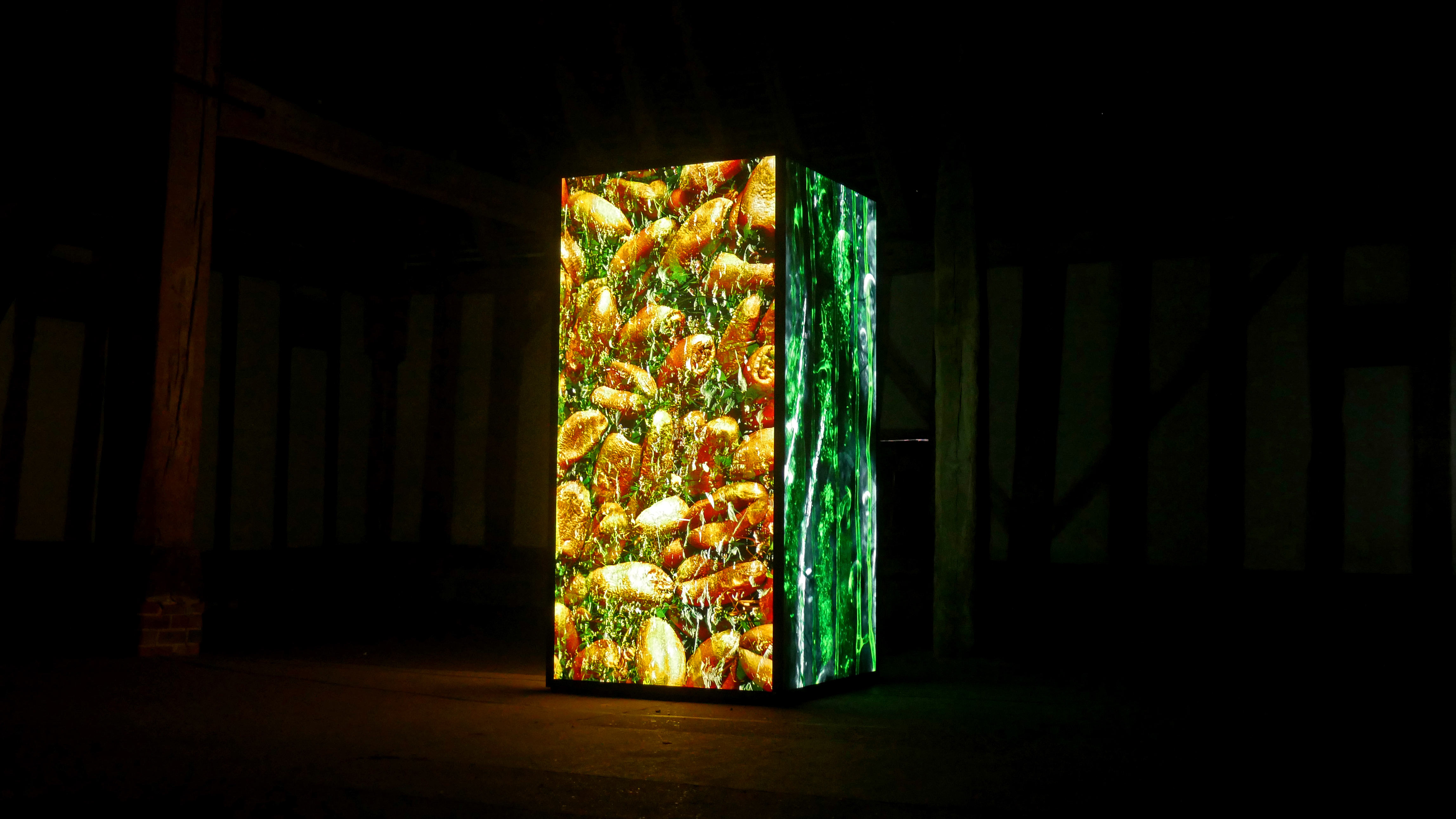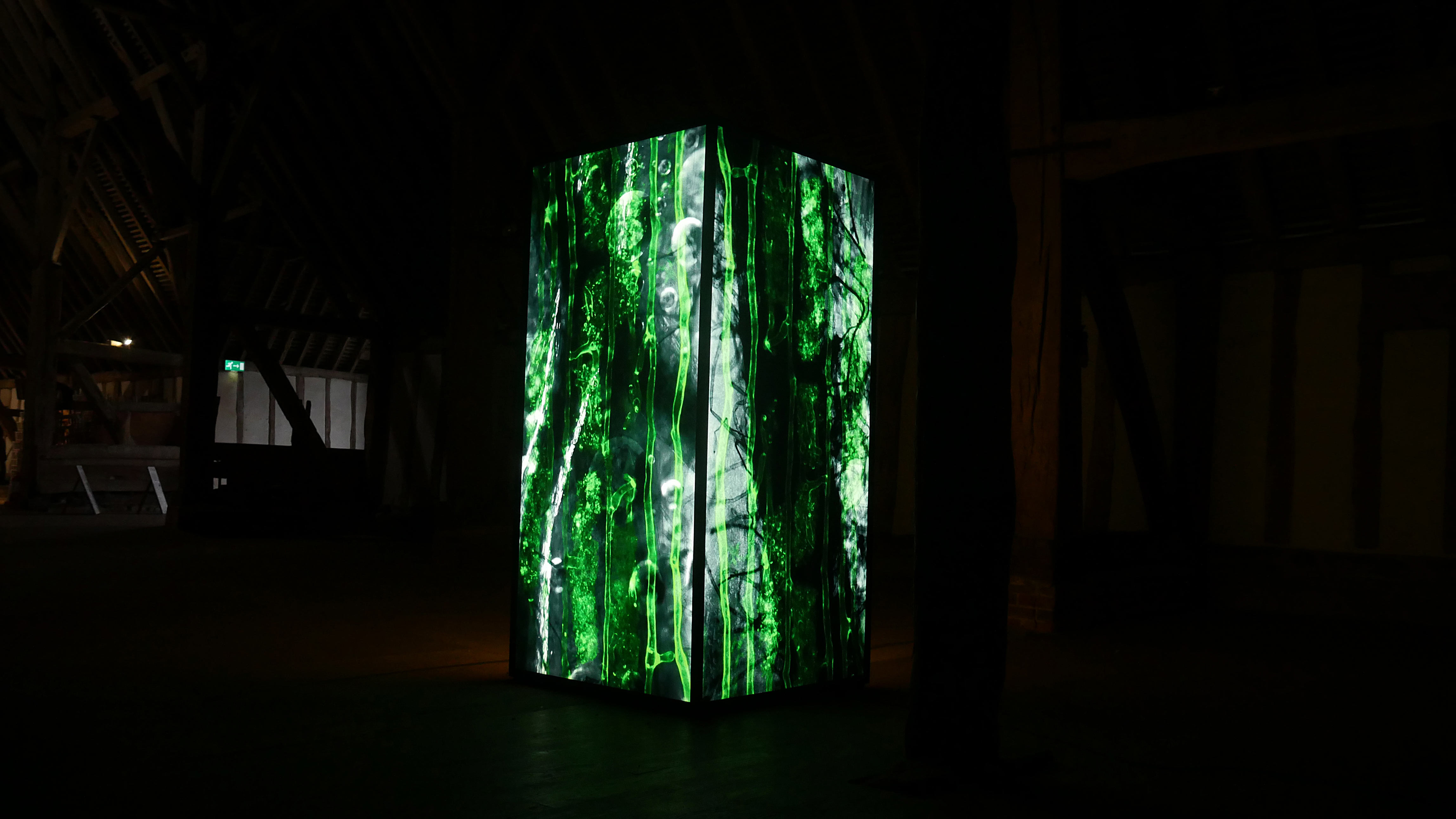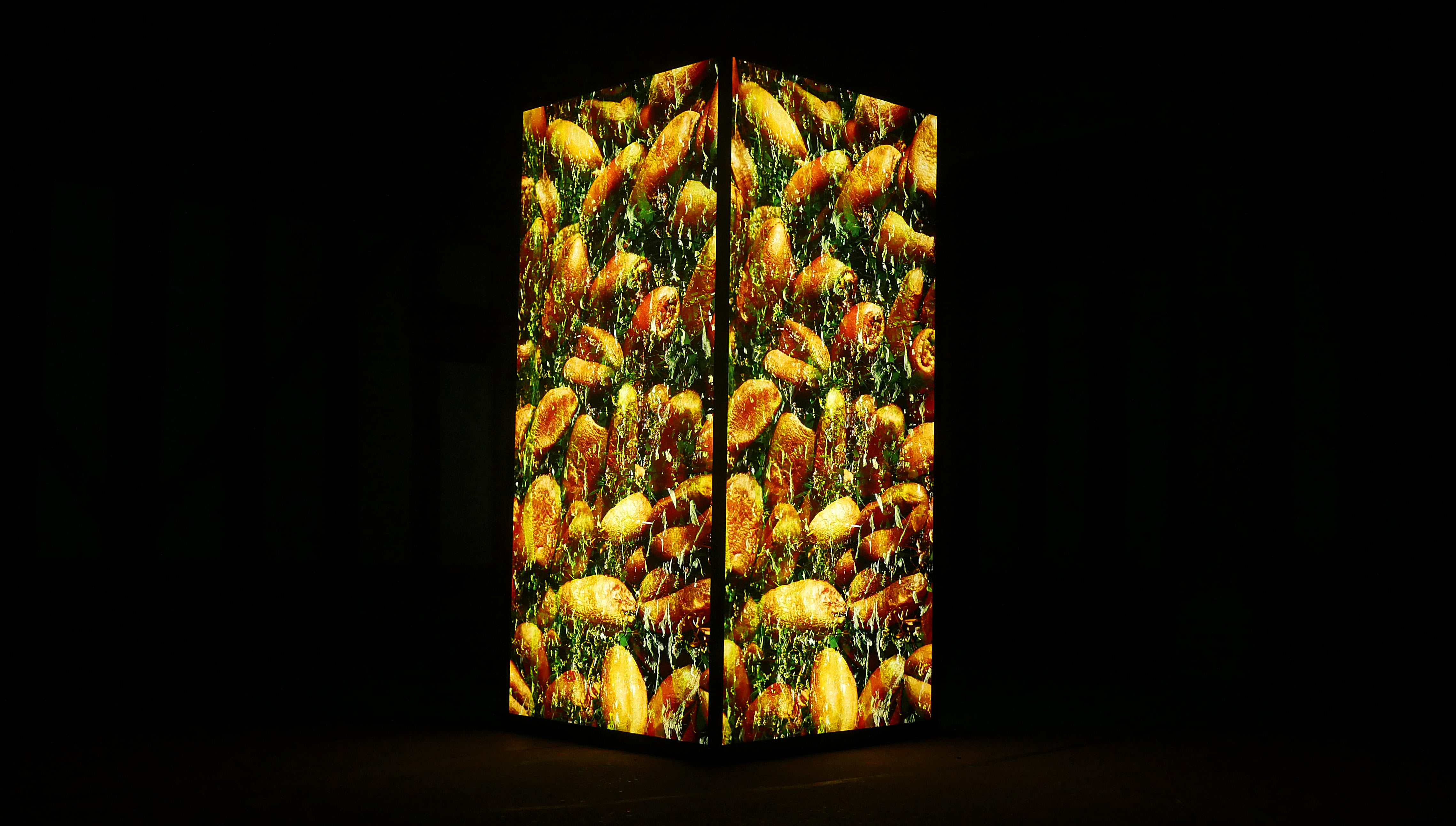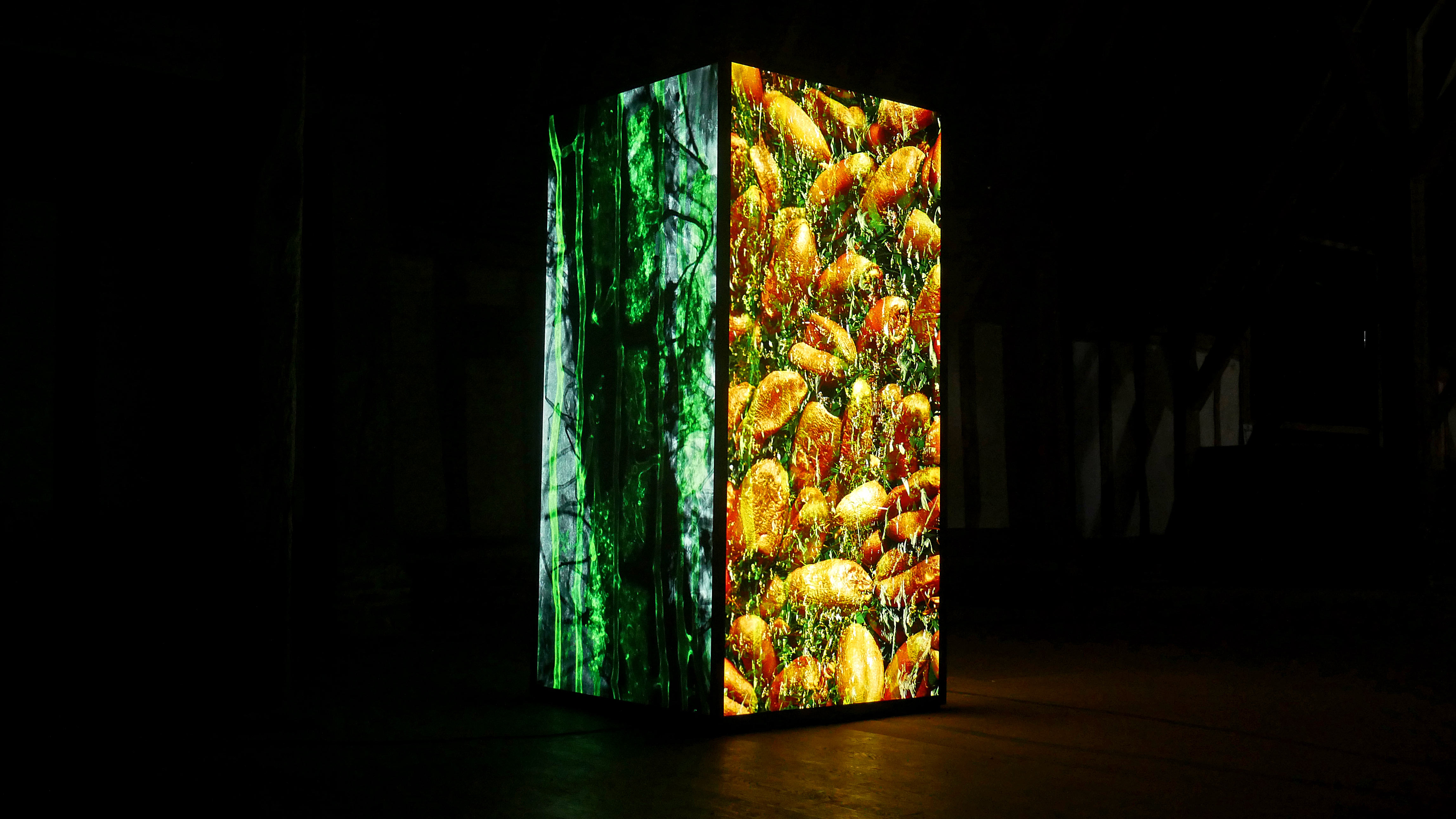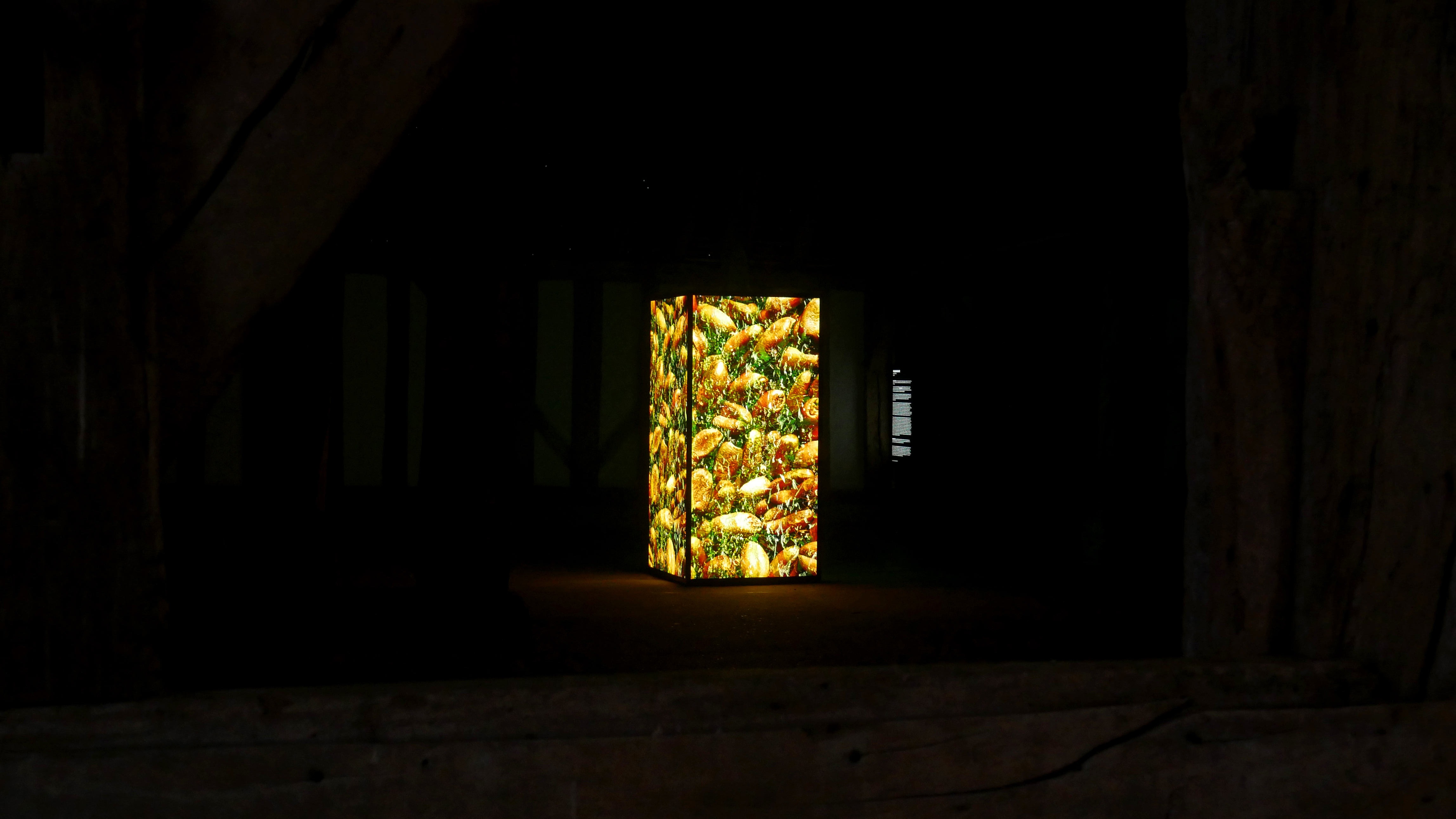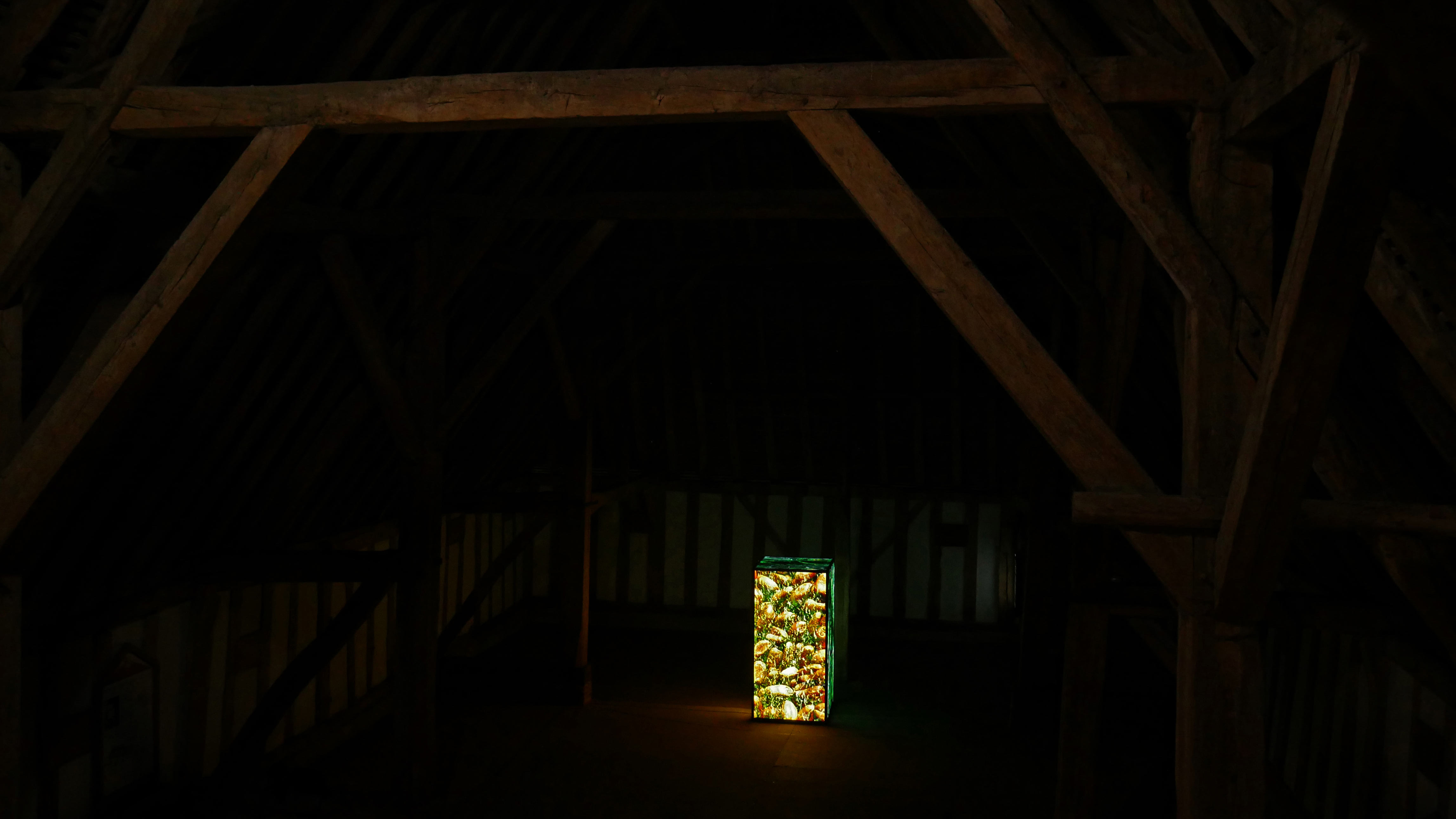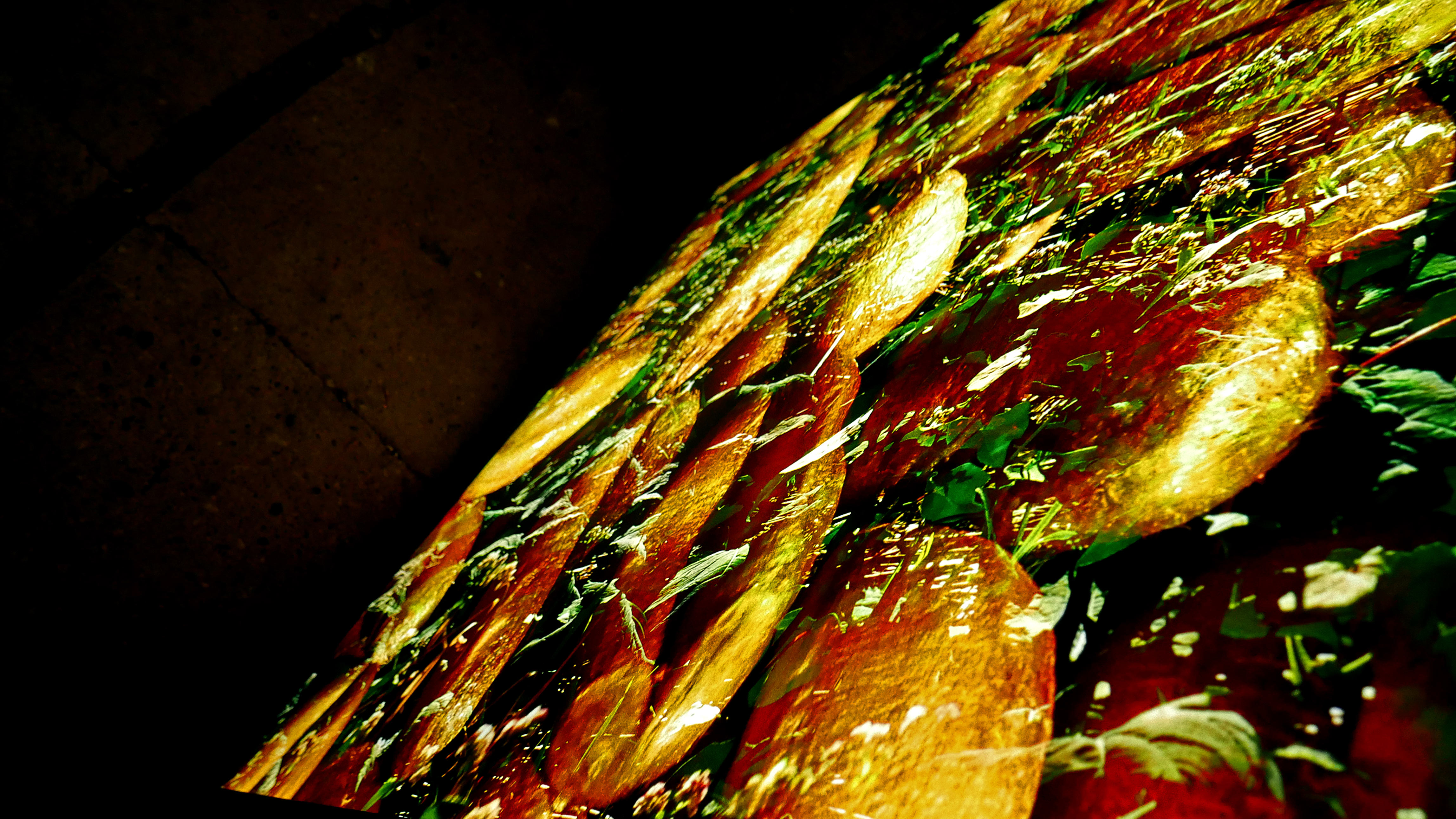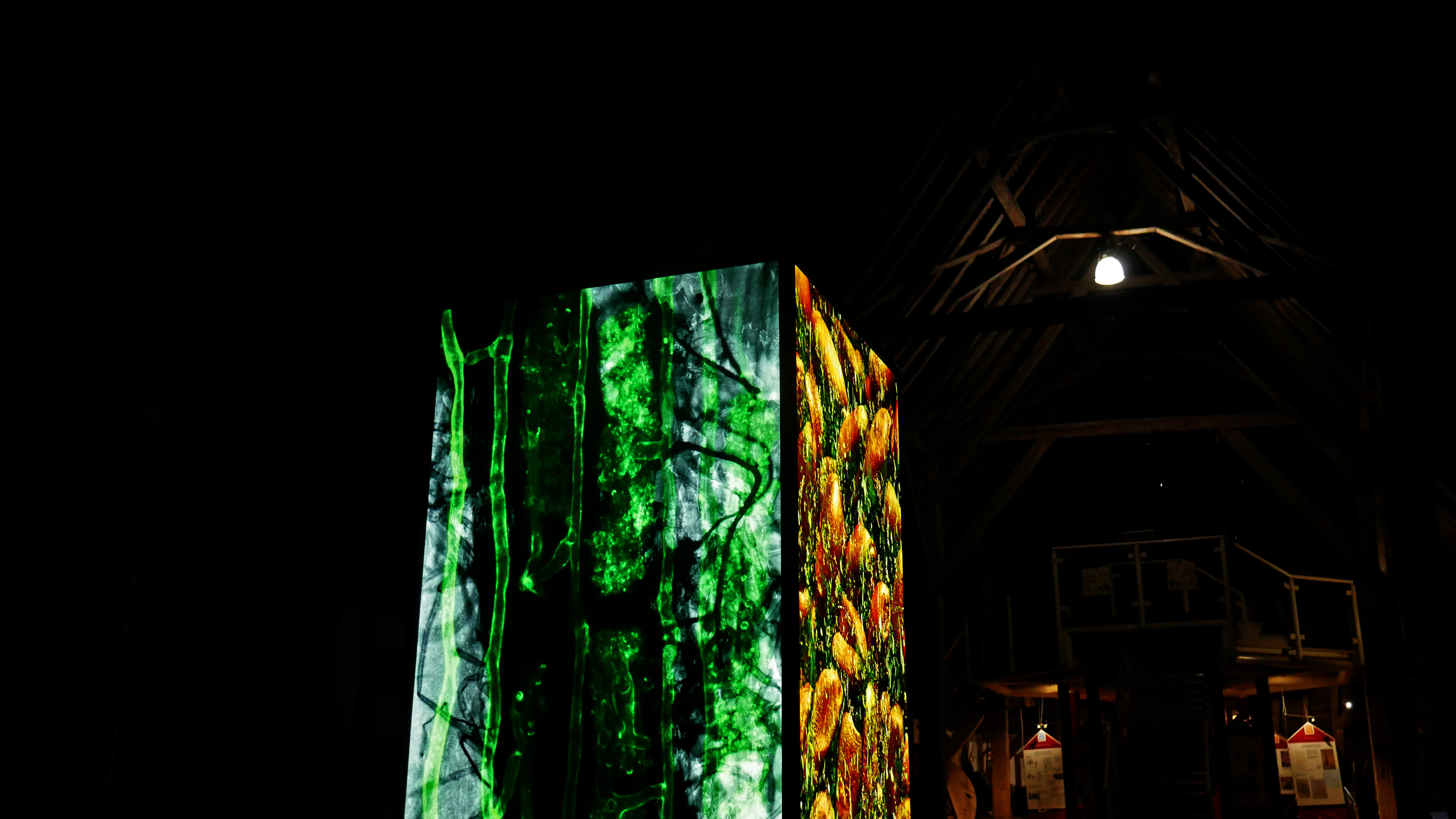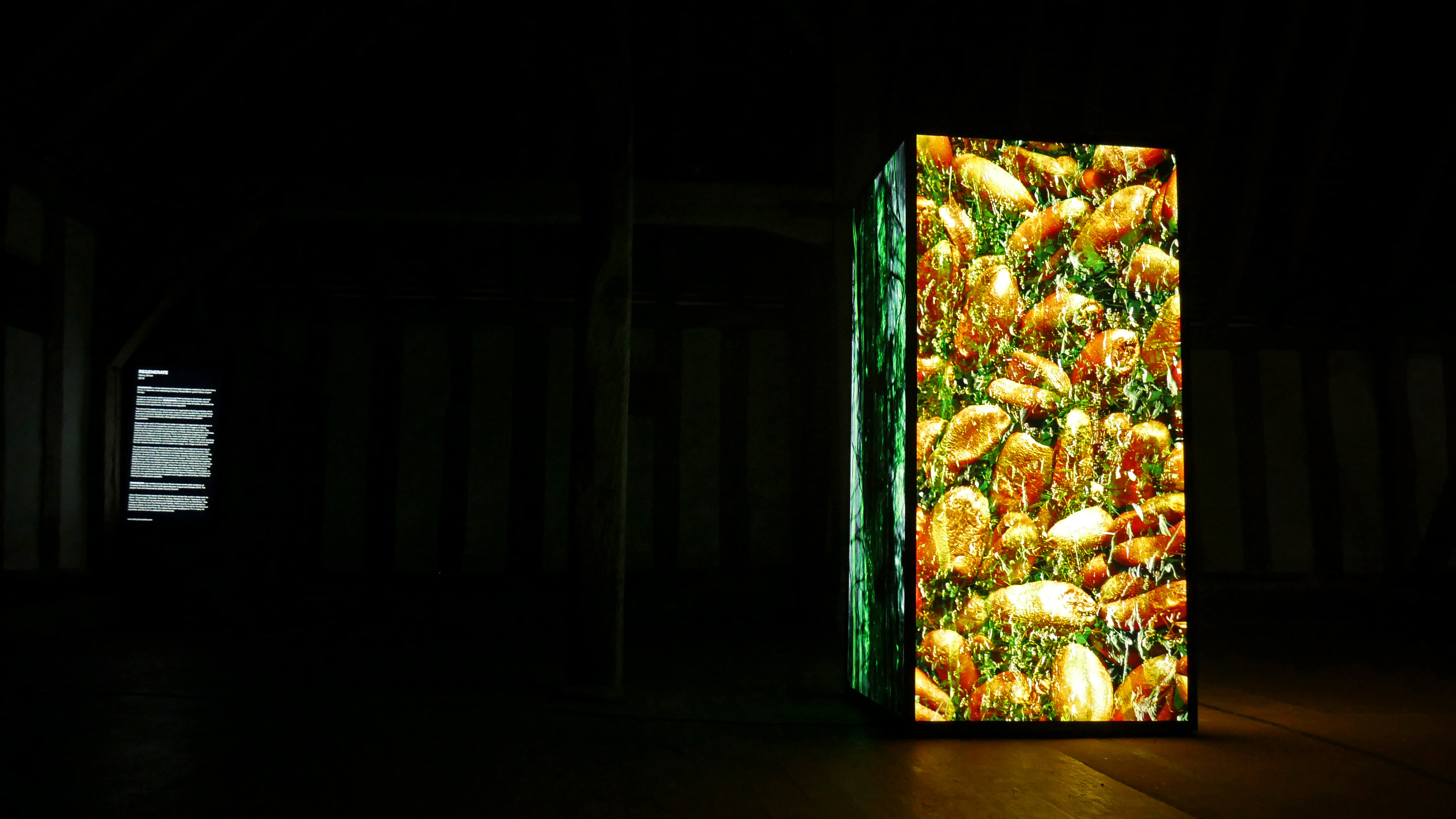
November 2019
REGENERATE is a three dimensional illuminated sculpture created in response, and celebrating Cressing Temple Barns’ grand history of grain storage. This new major permanent commission was created during my three month artist residency at Cressing Temple Barns, which took place between August and October 2019. The project was commissioned by Essex County Council and the resulting sculpture is on permanent public display at Cressing Temple Barns, Braintree, Essex.
To ensure we have the ability to survive and feed ourselves in the future, we must update our food production. REGENERATE promotes that food and the natural elements which sustain its’ production, such as ample water & healthy soil should be cherished and regenerated, not wasted and degraded.
The artwork focusses on raising awareness for regenerative farming practises which seek to increase biodiversity, enrich soils, improve water use efficiency, and enhance ecosystem services. Equating to farming systems that are resilient, sustainable, and have the potential to drastically offset global carbon emissions via carbon sequestration.
Displayed upon each of the sculpture’s sides is imagery of regenerative agriculture in practise. Upon the front panels the viewer is confronted with imagery of wheat, displaying the precious produce which was once stored within this very barn. The wheat has then been overlaid with photography of fields utilising regenerative practises, such as zero tillage and cover-cropping. Cover and companion cropping provide nutrients and protection to the main crop, while zero tillage banishes cultivation. Conventional farming typically involves repeated cultivations upon a field, such as being ploughed and then followed by numerous other cultivations. These cultivations degrade the soil, release stored carbon, and increase fuel usage, zero tillage avoids all this.
The rear panels focus upon displaying the positive effects of regenerative farming on the soil, such as increasing the occurrence of symbiotic relationships between crop roots and bacteria/fungi. This relationship provides nutrients to the crops, severely reducing the need to apply fertilisers, which improves the quality of our water and dispels reliance upon soon to be exhausted fertiliser supplies. The relationship also increases crop disease resistance and the sequestration of carbon. Displayed upon the rear panels is imagery from the symbiotic relationship between crop roots and arbuscular mycorrhizal fungi, where the root cells are colonised by the fungi, creating arbuscules which allow nutrient exchange with the plant. We would like to thank the John Innes Centre for their fantastic support on this aspect of the project. In particular, we would like to thank the researchers Dr Myriam Charpentier and Catherine Jacott for their generous sharing of research and imagery, as well as Ruby O’Grady for making the collaboration possible.
